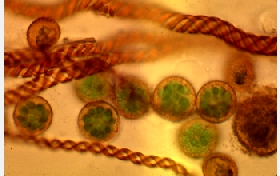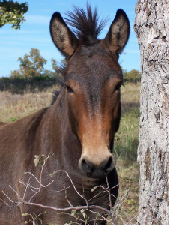
[ What is Life? ] [ Biomarkers ] [ The Importance of Oxygen ]
![]()
Despite the abundance of life surrounding us, there is currently no generally accepted definition of life. In the 1970s, Carl Sagan, astronomer and exobiologist, attempted to define life through five categories of definitions. However, problems arise in the form of counter-examples of objects we would not consider “alive,” but fulfill the requirements of the definition.
 |
 |
 |
![]()
![]()
Through the physiological definition, life is defined as a system capable of performing a number of functions including eating, metabolizing, excreting, moving, growing, reproducing, breathing, and responding to stimuli. However, cars could be defined to “eat,” “metabolize,” “excrete,” “move,” and “respond to stimuli” as well. Does that make cars alive? Fire also serves as a sufficient counter-example. There are even certain types of bacteria that don’t breathe at all but serve their days by altering the oxidation state of sulfur. But we would consider bacteria more alive than cars, wouldn’t we?
| Fire responds to stimuli, and can be thought of to "move" and "eat", but we wouldn't consider fire to be alive. |  |
The metabolic definition states that life uses energy to perform functions within its boundaries, by exchanging material with its surroundings without altering its general properties. Cars can also be considered “alive” through this definition as well. There are spores and seeds that are capable of being dormant and without any metabolic activity for hundreds of years, and can revive perfectly under better conditions. Does the definition of these spores and seeds change throughout their existence? Are they alive while they are performing metabolic functions but not alive while dormant?
 |
Spores are adapted to survive for long periods of time in a variety of conditions. It is possible for spores to lay dormant for years on end before becoming active again. |
![]()
The thermodynamic definition states that components of life are contained within definite boundaries (for example, cells) and results in locally increased order. But in this sense, books also have order.
| Books have order, but they definately aren't alive, right? |  |
![]()
The biochemical definition defines life as having a distinctive chemistry and contains coded hereditary information (ex. DNA) that is passed to the next generation. According to this definition, mules (offspring of a horse and a donkey) are not “alive” because they cannot reproduce. Viruses also have distinctive chemistry but cannot reproduce on their own. However, it is an ongoing debate as to whether viruses are alive or not.
 |
According to Sagan's biochemical defintion, mules (the offspring of a horse and donkey) would not be considered alive because they don't have the ability to reproduce. |
|
| Source credit: Terrill White |
![]()
The genetic definition defines life as capable of evolution by natural selection. All life contains hereditary information coded in large molecules, known as genes, which are made up of nucleic acids. Different genes are responsible for the expression of different characteristics of the organism. During reproduction, the genes replicate, passing instructions for various characteristics to the offspring. Occasionally, a mutation can occur, changing the instructions. Sometimes, this results in death of the organism but can also result in the organism being better adapted to its environment. This favorable adaptation then gets passed down to other offspring. Every single thing on this planet is the product of four billion years of evolution. Nothing is the same as four billion years ago. However, bank accounts change with time as well.
| The structure of DNA consists of four different nucleotide bases (Guanine, Cytosine, Adenine, Thymine) connected to a sugar-phosphate backbone. |  |